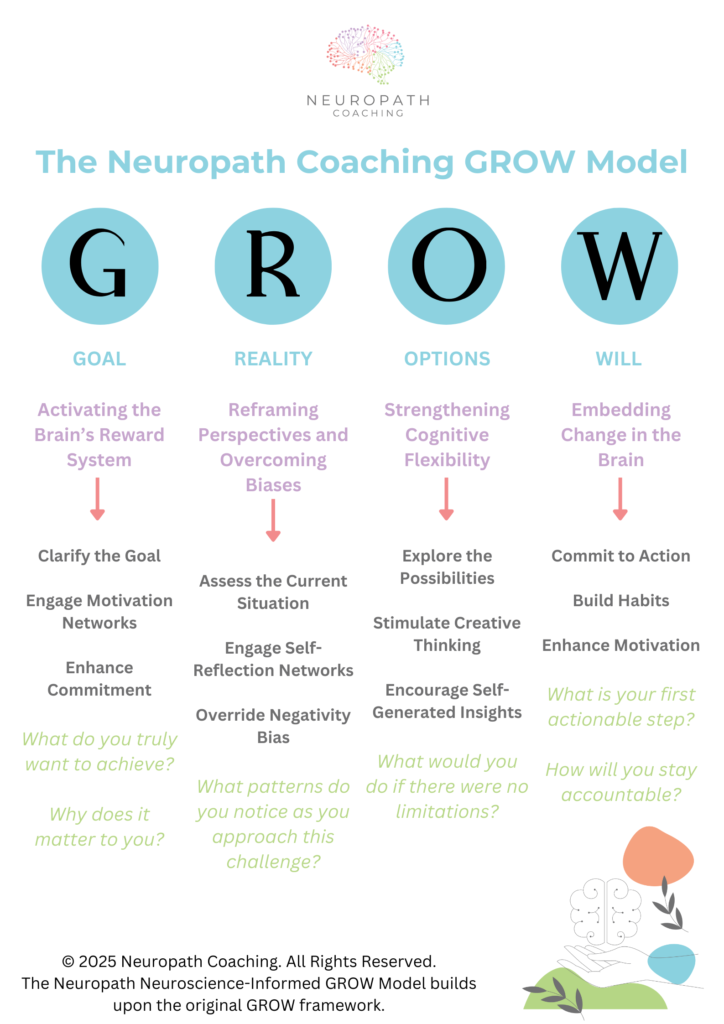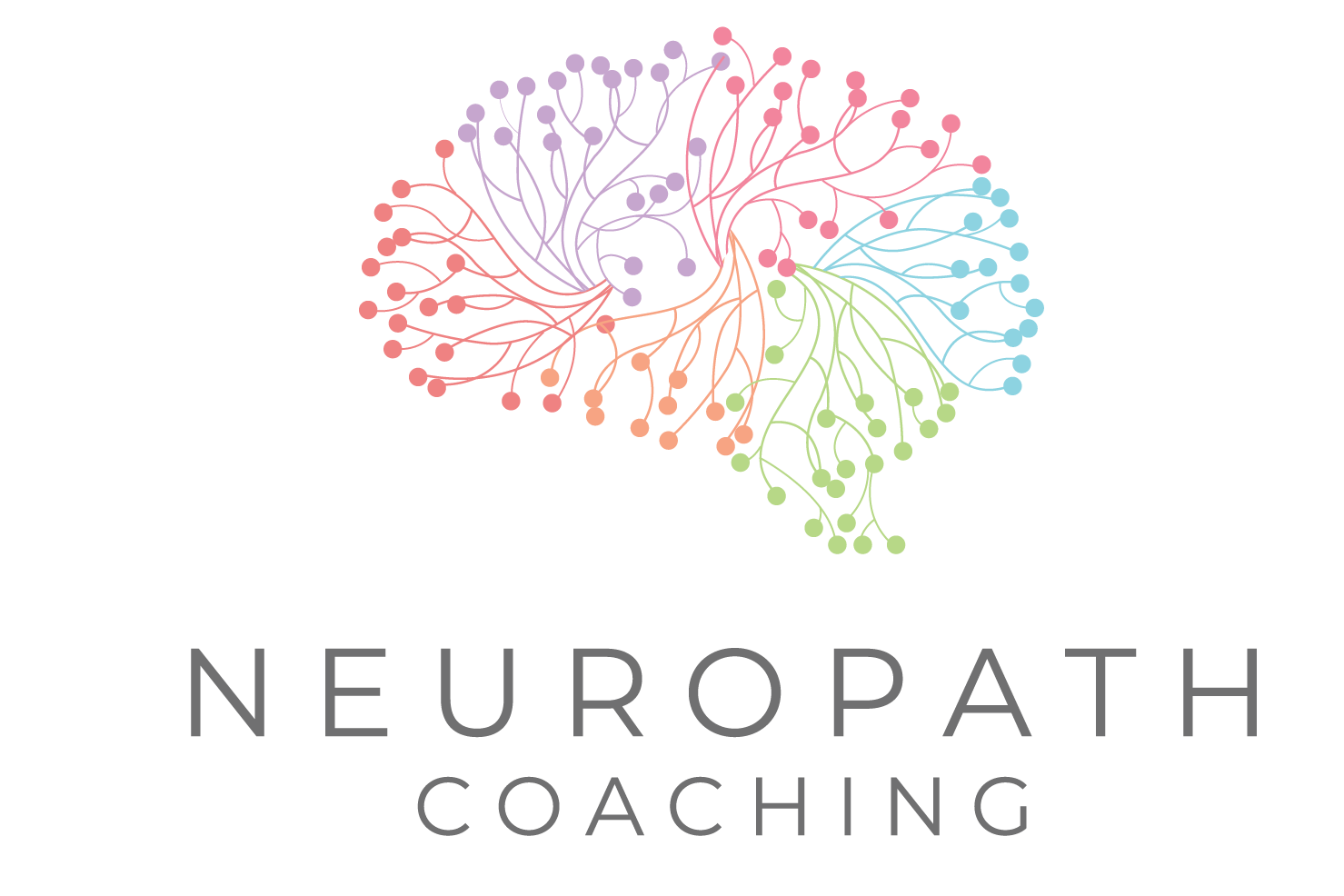The GROW Model: Neuroscience Rewire
The GROW Model is a widely recognised coaching framework developed by Sir John Whitmore, Graham Alexander, and Alan Fine in the late 1980s. It provides a structured approach to goal-setting and problem-solving that has been used across various coaching disciplines.
At Neuropath Coaching, we have built upon this foundation by integrating neuroscience principles to enhance clarity, motivation, and behavioural change. The Neuropath Coaching GROW Model aligns with cognitive and behavioural science to make coaching conversations more impactful, helping individuals move from insight to action.
This model respects the original GROW structure while adding new dimensions based on neuroplasticity, cognitive flexibility, and motivation science. By understanding how the brain processes goals and decisions, coaches can facilitate longer-lasting transformation for their clients.

A Neuroscience Perspective
1. Goal – Activating the Brain’s Reward System
- Clarifying the goal: Establish a well-defined, meaningful outcome.
- Engaging motivation networks: The dopaminergic system (linked to motivation and reward) is activated when goals are specific, visualised, and emotionally resonant.
- Enhancing commitment: Goals aligned with personal values are more likely to result in sustained effort.
🔹 Coaching Tip: Use mental contrasting to help clients visualise success and then identify potential obstacles. This engages both the prefrontal cortex (for planning) and the amygdala (for emotional processing), improving goal commitment.
🔹 Key Question: What do you truly want to achieve, and why does it matter to you?
2. Reality – Reframing Perspectives & Overcoming Biases
- Assessing the current situation: Explore strengths, challenges, and blind spots.
- Engaging self-reflection networks: The default mode network (DMN) helps individuals process past experiences and self-identity.
- Overriding negativity bias: The brain tends to focus on problems due to evolutionary survival mechanisms. Coaches can help shift this by activating the dorsolateral prefrontal cortex (DLPFC), which aids in making complex decisions.
🔹 Coaching Tip: Encourage clients to use cognitive distancing—view their situation as if advising a friend. This technique improves problem-solving by reducing emotional reactivity.
🔹 Key Question: What patterns do you notice in how you approach this challenge?
3. Options – Strengthening Cognitive Flexibility
- Exploring possibilities: Expanding potential solutions beyond habitual thinking.
- Stimulating creative thinking networks: The anterior cingulate cortex (ACC) is involved in cognitive flexibility and perspective shifts.
- Encouraging self-generated insights: Neuroscience shows that solutions created by the individual result in stronger neural encoding and long-term retention, which is the central premise of coaching.
🔹 Coaching Tip: Use psychogeography techniques—changing physical location can help activate new neural pathways for problem-solving. You could try walking while problem solving.
🔹 Key Question: What alternative approaches could you explore if there were no limitations?
4. Will – Embedding Change in the Brain
- Committing to action: Defining specific steps and accountability structures.
- Building habits through neuroplasticity: The basal ganglia and striatum are involved in encoding repeated behaviours into habits.
- Enhancing intrinsic motivation: Research shows that motivation is stronger when actions are personally meaningful and supported by small, dopamine-releasing wins.
🔹 Coaching Tip: Use implementation intentions—clients should articulate their next step in an “If-Then” format (If I feel resistance, then I will take one small step anyway). This primes the brain for action.
🔹 Key Question: What is your next concrete step, and how will you stay accountable?
© 2025 Neuropath Coaching. All Rights Reserved.
The Neuropath Neuroscience-Informed GROW Model builds upon the original GROW framework developed by Sir John Whitmore, Graham Alexander, and Alan Fine, integrating neuroscience insights to enhance coaching effectiveness.
